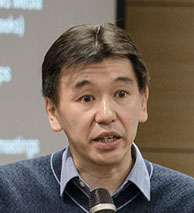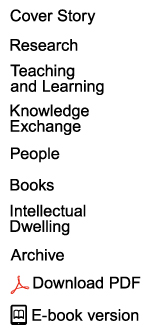
When Donald Trump was elected US president in November, 2016, there was an unintended beneficiary at HKU. The Journalism and Media Studies Centre had just announced a relaunch of its massive open online course (MOOC) on news literacy and with Mr Trump’s win, enrolment and enquiries from around the world soared.
“People were curious about how to tackle fake news,” said Dr Masato Kajimoto, Assistant Professor
of Practice who leads the ‘Making Sense of the News’ course on Coursera in partnership with the Center for News Literacy at Stony Brook University. “We received invitations to speak at lots of conferences.”
The course was not actually developed with Mr Trump’s brand of ‘fake news’ in mind – the original impetus came from infomercials, hoaxes and the like – but the critical thinking skills it teaches are applicable to any news story.
“Most news stories, whether in the New York Times or other outlets, are often presented as a package – they contain a mixture of verified facts, opinions, speculation, and reporter’s observations which may not be factual,” Dr Kajimoto said.
“The idea with our course is to learn how to identify verified fact and what we call actionable information. So when you decide, for example, to participate in a plastic bottle recycling campaign, you will know how to determine if your action will make a difference. Or when you decide to vote for
a politician, you will be able to base your judgment on facts, not just belief. Actionable information is the key.”

![]() Historians say fake news has been around since the printing press was invented. So instead of trying to find a cure, we should look for symptom relievers. I see news literacy as building the immune system.
Historians say fake news has been around since the printing press was invented. So instead of trying to find a cure, we should look for symptom relievers. I see news literacy as building the immune system. ![]()
Dr Masato Kajimoto
Bursting bubbles
Conveying these ideas to an international audience is a tall order. The news examples used must be general enough to be of interest in any country or culture, and accessible to people in places like China where certain news and social media organisations are blocked. Copyright must also be respected.
But given that enrolment to date has reached 126 countries, there is little doubt that interest in countering untrustworthy news is a global concern.
“One thing we have learned is that false information and disinformation really polarise society, as we have seen in Hong Kong, the US and other countries. The filter bubbles on social media mean people hear the same information again and again, and they end up not hearing from the other side at all,” he said.
Moreover, they mistrust the other side as well as traditional fact-checkers such as the established media. All the more reason why a course like this is needed to challenge the formation of bubbles.
“Historians say fake news has been around since the printing press was invented. So instead
of trying to find a cure, we should look for symptom relievers. I see news literacy as building the
immune system, so to speak. Critical thinking skills are the backbone of better news literacy
skills,” he said.
Since healthy practices are best established at an early age, the course also targets young people through their teachers and librarians, who are alerted to the MOOC as a free resource for developing news literacy skills in students.
Bias checks
To check whether a quoted source is reliable, the ‘Making Sense of the News’ MOOC advises using the IM VAIN mnemonic. A reliable story should contain sources that are: Independent; Multiple (more than one source); Verified (they provide evidence for their statements); Authoritative/Informed; and Named.
To check one’s own bias, visit the Project Implicit website operated by Harvard University, which has online tests on bias https://implicit.harvard.edu/implicit/
Overcoming hurdles
That might seem obvious at first glance, but there can be hurdles or diversions when it comes to determining fact. For instance, information is often conveyed by biased or self-interested sources. If a dermatologist is quoted saying mobile phones are creating problems with the skin around the neck because people are tilting their heads downwards for long periods of time, should that be a reliable source? Or are they trying to drum up business?
News also needs to be distinguished from entertainment and other forms of media, which can be especially difficult on social media where everything is mixed in together. And journalism needs to be distinguished from news – a press release can be news, but information that is verified and for which an independent organisation is accountable, such as a newspaper or broadcaster, is journalism.
People’s own weaknesses also need to be overcome when it comes to receiving information they may or may not want to hear. “Our course is in part based on social psychology and cognitive science, because a lot of times our brain prevents us from recognising what is verified fact. So we talk about how confirmation bias works, how cognitive dissonance actually creates an environment in our brain where we tend to believe what we want to believe. One of the key areas we cover is understanding our tendency to bias,” Dr Kajimoto said.
An Antidote To ‘Fake’ And Misleading News
A timely online course is arming students with the tools to tell fact from fiction, bias and opinion.
Next
Dr Masato Kajimoto integrated his massive open online course (MOOC) ‘Making Sense of News’ into on-campus teaching.
Dr Masato Kajimoto delivering a keynote speech at the International Symposium on STEM Education 2017 held at HKU.




